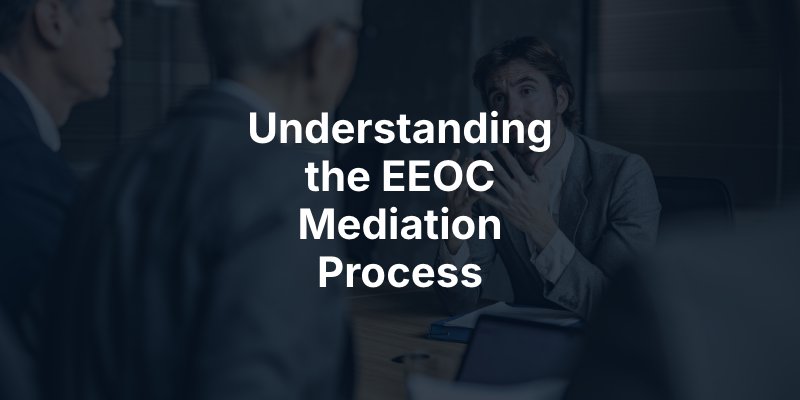The Equal Employment Opportunity Commission (EEOC) provides mediation as a voluntary way to resolve employment discrimination disputes quickly and fairly.
Mediation is an alternative to a lengthy investigation or lawsuit, offering benefits to both employees and employers. Keep reading to learn more from the experienced employment attorneys at Aegis Law.

After someone files a charge of discrimination, the EEOC may offer mediation before starting a formal investigation. The EEOC screens cases carefully to decide which ones are suitable, as not every charge qualifies. Cases involving clear evidence of discrimination or urgent legal issues may move directly to investigation.
If both parties agree to mediation, the EEOC will schedule a session, often within a few weeks. This speed can save months or even years compared to a full investigation or court proceedings.
EEOC mediation is a free, confidential process that brings together the employee who filed a discrimination charge (the charging party) and the employer (the respondent). A neutral mediator helps both sides communicate openly and work toward a mutually agreeable resolution.
The mediator does not take sides, make decisions, or force a settlement. Instead, they guide the conversation and help clarify misunderstandings. Participation in mediation is voluntary for both parties. Either side can decline and continue with the regular EEOC investigation process.
The EEOC usually holds mediation sessions at its offices, but they can also happen virtually. Here is the typical process:
The mediator explains the rules, the voluntary nature of the process, and emphasizes confidentiality.
Each party describes their view of the situation without interruption.
The mediator facilitates open discussion, asks questions, and helps each side understand the other’s position.
The mediator may meet privately with each party to explore options and possible solutions.
The parties work together to find acceptable terms for a resolution.
If they reach an agreement, they put the terms in writing and sign a settlement. If not, the charge returns to the normal EEOC investigation path.
Mediation usually takes a few hours but can sometimes extend into multiple sessions depending on the complexity of the case.
Mediation offers several advantages over formal investigations or litigation:
If mediation does not resolve the dispute, the EEOC resumes its standard investigation of the charge. The mediator does not share any information with the investigators, and the confidentiality of the session remains fully protected.
An EEOC investigator will collect evidence, interview witnesses, and review documents. The employer must submit a written response, and the employee may reply. After the investigation, the EEOC will decide whether there is reasonable cause to believe discrimination occurred.
If so, it will attempt to settle the case through conciliation. If conciliation fails or if no cause is found, the EEOC will issue a “Notice of Right to Sue,” allowing the employee to file a lawsuit in court if they wish.
At Aegis Law, we handle all types of discrimination claims, including race discrimination, pregnancy discrimination, and more. Contact our firm today to learn more.